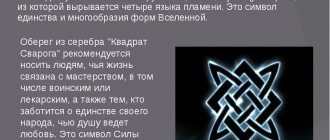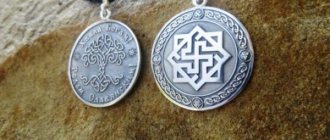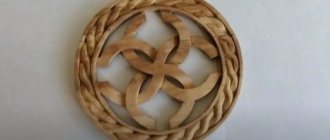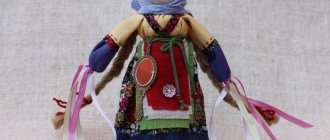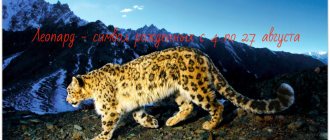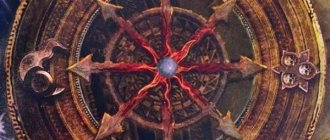Ancient Slavic symbols in tattoos, which have come to us from distant ancestors, have special value and significance. The most recognizable patterns are not just beautiful drawings on the body, but powerful amulets. One of the most famous tattoos is the Star of Rus', its other name is Svarog Square. Since ancient times, it was applied to the body in order to achieve the blessing, protection and patronage of the powerful Svarog.
History of the origin of the symbol
The symbol, called the Star of Rus', has been known since ancient times. It has long been used as a sacred sign by Russian wise men and knights. This emblem was applied to the clothes of the Prophetic Oleg and the Kyiv prince Svyatoslav.
Initially, the symbol was called the Star of Lada. The supreme goddess of the Slavs, Lada, is considered the ancestor of all Slavic gods and peoples. It was she, according to legend, who gave people this amulet.
Another name for this amulet is the Square of Svarog, the central character of the Slavic pantheon. Svarog was considered by the ancient Slavs to be the lord of the sky, the fire god and the patron of blacksmithing. The four petals that are present in the emblem demonstrate a connection with the flame burning in Svarog’s forge.
The Star of Rus' is closely connected with the Vedas - the secret knowledge of the ancient Slavs. It is no coincidence that this sign appears quite often in Vedic literature. It is believed that the symbol encrypts the basis of sacred knowledge of the past.
Sketches
The Star of Rus' tattoo comes in various variations, but, undoubtedly, each of the designs is filled with belligerence and courage. The most popular designs are shields, swords and other armor on which a sacred symbol is placed.
Often the Svarog Square is surrounded by natural landscapes - mountains, seas, clouds. Often the symbolism is surrounded by an intricate ornament consisting of other solar signs. But when choosing a sketch that is difficult to decipher, it is important to study the meaning of each symbol so that a person’s energy is not destroyed due to a combination of incompatible amulet signs.
The mysterious power of the amulet
The Star of Rus' amulet carries great power because it combines the symbolism of the three worlds.
- Reality is the reality around us, which we perceive with our senses. In other words, this is the material world.
- Nav is a world inhabited by spirits. There is Light and Dark Nav. The first contains the souls of our ancestors, whose life on Earth is completed. The second is inhabited by spirits hostile to humans.
- Prav are the highest spheres where the Slavic gods live. Only the most worthy have access there. Those who lived according to the rules prescribed by the Vedas.
The ancient Slavs tried to follow Vedic laws. From a young age, they revered the traditions of their ancestors and ancient gods. They respected their native land and nature, living with it in complete harmony. Therefore, the Slavs in those days were under the protection of the gods.
Their knowledge of the world around them was deeper than that of many modern scientists.
The Vedas provided our ancestors with a picture of the world in all its diversity. People believed that the three worlds had an invisible connection between each other, thanks to which there was a unity of the past, present and future. The Star of Rus' amulet embodies this inextricable connection between the material, spiritual and divine worlds. The talisman unites the forces of nature, ancestors and Slavic gods.
In addition, the source of strength is the age-old wisdom of many generations of Slavs. Therefore, the owner of the amulet can count on its power, which can protect against the influence of evil. But the properties of the amulet are not limited to the function of protection. With the help of the Star of Rus', a person gains access to the sacred wisdom of his ancestors and establishes a connection with ancestral origins. The talisman serves to receive information from the subtle worlds, but the Star of Rus' does not provide such an opportunity to every person. Purity of intentions is important here; only in this case the owner of the amulet will have access to sacred knowledge. If he is going to use this knowledge for selfish purposes, then the entrance to the space of the subtle worlds will be blocked.
Tattoo meaning
The energy component of the Star of Rus' tattoo corresponds to the character of the stronger half of humanity. This is a strong male amulet that allows you to:
- gain strength, confidence and strength of character;
- promotes the development and improvement of personal qualities;
- awakens inspiration, activates creativity;
- develops willpower and reliability;
- favors career growth;
- makes a person mobile, encourages him to learn new skills and knowledge;
- forces you to return to your roots, to honor your family.
For a long time, the true purpose of applying the symbol of the Star of Rus' was the desire to unite with nature. The ancient Slavs believed that their destinies depended on three components of the universe:
- Reality - human existence (all processes occurring on earth);
- Nav - the other world with the souls of dead people;
- Rule is divine power.
It was believed that a person with a tattoo of the Star of Rus' was in harmony with all worlds, and the great power of the deity protected him from the influence of dark forces. The eight-pointed sign symbolizes the triumph of good energy over the doomsday, and is a filter of negative energy, ridding its owner of it.
Svarog’s support can be obtained by men who know how to take responsibility for their actions, keep their word and never give up in the face of difficulties. The Star of Rus' tattoo will help you become more decisive and brave, but it may not have a protective effect on overly melancholic and lazy people.
In addition to character correction, a tattoo protects against the evil eye, damage and the influence of all kinds of witchcraft. The symbolism promotes health, destroys idleness and passivity, and gives strength in difficult life situations.
The meaning of lines and weaves
The Star of Rus' is a collection of individual elements that form a single inextricable structure. In this unity lies the power of the ancient talisman. The geometric shapes that make up the overall design contain great energy.
The central figures are an eight-pointed star and a rotating cross woven into it. The Slavs have used these sacred symbols from time immemorial. In Rus' they were used to decorate weapons, put them on military banners, and embroider them on clothes. Before the baptism of Rus', the eight-pointed star personified the highest divine principle for the Slavs. After the adoption of Christianity, it began to be perceived as a prototype of the Star of Bethlehem.
Upon closer examination of the emblem, a distinct square can be identified, the corners of which are directed up, down, right and left, pointing to the cardinal directions. This square symbolizes the fertility of the earth. Two elongated ovals pass through the sides of the square, intersecting in the center. Their pointed ends represent the four highest qualities that were especially valued by the Slavs:
- faith;
- honor;
- justice;
- Liberty.
The combination of lines forms an accurate, completely finished drawing, symbolizing the overcoming of chaos and the reign of harmony. The destructive power of evil can only be defeated if we combine male and female energies. In the sacred symbol, the feminine and masculine principles merge into a single whole. Typically, the sacred symbols of the Slavs reflect either the female or male divine hypostasis. And the “Star of Rus'” amulet represents an inextricable unity. It reflects the strong harmonious union of Lada and Svarog.
Many lines intertwined with each other represent the established balance and unity of the elements in the Universe. But the emblem also reflects the idea of perpetual motion, constant changes in nature.
We can say that it is also a symbol of constant renewal and spiritual growth.
The beauty of Russian legends
Svarogov Square is not the only memory of him; the word “bungle” has been preserved in our vocabulary to this day. And although it is stated that it means to create something magically, most often the word is used when one wants to characterize something done not very well, but quickly. Nevertheless, the legends surrounding Svarog are one more beautiful. And our ancestors had their own centaur Chiron, and his name was Kitovras. He built a temple around the Alatyr stone, where they began to make sacrifices. The result was an altar, apparently long before the altars of the ancient Greeks. And what a beautiful legend about Blue Svarga - the country created by our ancient god! According to it, the ancestors of the Slavs still live there, and the stars in the sky are their shining eyes. Further, the legend tells about the location of the ancient temple - this is Mount Elbrus, which in ancient times was called Belina or White Mountain. There was another name - Bel-Alabyr, and it towered above the Belaya River, flowing next to the White City, in which, naturally, the Belogors lived. Everything was white - either covered with snow, or the snow-white Alatyr stone shone. Since it is Svarog who is credited with beginning the Iron Age on Earth, his altar is any forge, any anvil with a hammer, and sacrifices, or demands, to the demiurge god (artisan, creator, master) usually consist of cheese cakes or cottage cheese. The celebration of Svarog falls on November 14, the day of Kuzma and Demyan, father and son (a holiday of masters of artistic forging).
As noted above, the emblem of the ancient Slavic god is Svarogov Square. We will now analyze the meaning of the symbol in detail.
What does the amulet protect from?
Since the amulet reflects the unity of the masculine and feminine principles, the Star of Rus' can be worn by representatives of both the stronger and weaker sex. The owner of the amulet gains access to the secret knowledge of antiquity, finds peace and emotional balance, and also begins to master intuitive knowledge of the world.
The Star of Rus' embodies the harmony of the Universe. Therefore, the amulet is able to bring balance to the life of the person who uses it. The amulet will serve as a guardian of the hearth and will bring trust and peace to the family. If you wear it on your chest, it will become a powerful protector from problems and troubles, will avert trouble, and calm conflict. At the same time, it also provides effective protection on the subtle plane, since it is able to repel an energy attack. We are talking about an attempt to cause damage, an evil eye or a curse.
The ancient amulet will also be useful for women, since it emits positive vibrations. The female version of the amulet is called the Star of Lada. Her energy will help a married woman establish a favorable atmosphere in the home. It will be easier for a young girl wearing the Star of Lada to attract a worthy groom and protect herself from selfish and dishonest men.
Men also wear the Star of Rus' in the form of a chest pendant. The talisman in this case is called the Square of Svarog. Accordingly, the owner of the amulet falls under the protection of this ancient god, who established the basic laws of the universe. The Svarog Square activates ancestral memory in a man and gives access to the wisdom of his ancestors.
This amulet gives the warrior protection in battle. The Knight receives something like invisible armor, and his self-confidence increases significantly. In fact, a man becomes fearless in the face of death. The Square of Svarog, applied to the skin in the form of a tattoo on the forearm or on the left half of the chest, where the heart is located, had particular power.
An amulet can provide serious assistance to a person who finds himself in a difficult life situation. The Star of Rus' will restore confidence, give mental strength, and suggest a way out of the impasse.
Often the ancient Slavs used a sacred symbol to protect their home. For this purpose, sacred symbols were applied to the walls and doors of the house, window curtains, and kitchen utensils.
Where to apply
If the Star of Rus' tattoo is intended for a protective function, the design should be applied to areas of the body that are invisible to others, but always closer to the head. The amulet will have an equally powerful effect if the symbol is placed on the sternum, closer to the heart.
The choice of application location is influenced by the size of the tattoo sketch. The Little Star of Rus' will look good on a man’s wrist or neck. Large symbols, complemented by stylized elements, are most often placed on the shoulder, chest, and shoulder blades. There are tattoos that occupy half of the owner’s back.
Compositions with gods, artisans, and warriors require a large placement area, so the inner side of the forearm is suitable for them, and sometimes the tattoo extends over the entire arm from the hand to the forearm. Sometimes the Svarog Square tattoo can be found on the calves, but such placement does not have any protective meaning and is more related to artistic tattooing.
Forms of amulet
The Star of Rus' has absorbed the age-old wisdom of many generations of Slavs. Such a symbol serves not one person, but an entire generation or clan. With this use, it is appropriate to talk about the Large form of the amulet. It can be represented by an embroidered carpet that hung on the wall in the house. The carpet was of considerable size, and the power of such a talisman was very significant.
The small form involves individual use of the talisman. The Little Star of Rus' is a part of the whole. Nevertheless, it retains the pattern of the Large shape, but at the same time such an amulet can be carried with you. The emblem provides individual protection and provides the owner with a connection with the memory of ancestors.
Main pre-Christian god
Before describing the Square of Svarog, it is necessary to remember about God himself. Who is he? What is he famous for? Since the truth is born in disputes, and there are so many dark spots around antiquities, there is no final definition of who Svarog is. Some believe that it generally arose as a result of a typo and incorrect translation of the “Chronography” by the Byzantine author, John Malala. This invaluable evidence of time was presumably translated into Old Church Slavonic in the 10th century. It mentioned that Dazhdbog (like the ancient Greek Helios) - the Sun god, was called Svarozhich, or the son of Svarog.
Who can wear the amulet and how?
There are no special restrictions on the use of the ancient Slavic talisman. It can be worn by both men and women. What is important here is not the age and gender of a person, but his inner world. The Star of Rus' contains the power of the gods and ancestors living according to the laws of the Rule. Therefore, only a person with high moral qualities can use the amulet.
If a selfish person who wants to cause harm to someone wants to use the power of a sacred sign, then he will not succeed. Moreover, he risks incurring the wrath of the gods of Rule.
Sometimes an amulet can be given to a child. But tradition does not recommend doing this until the child has gained awareness. Wearing the Star of Rus' requires a deep understanding of the symbol, and children, with rare exceptions, are not ready to comprehend the essence of the sign.
The Star of Rus' is not just an amulet that a person constantly carries with him. He is like a living being that requires attention to himself. It is important to take him in your hands every day, to talk with him as with a wise mentor. In case of a difficult life situation, the amulet can help with advice. At this moment you should listen to your inner voice.
In addition, like any amulet, the Star of Rus' needs regular cleaning and “recharging”. How to activate the talisman will be discussed later.
What does the Slavic amulet Square of Svarog mean?
The history of the origin of the symbol dates back to ancient times, when the Slavs believed in the indivisible connection between man and nature and considered themselves direct descendants of the gods: the great and powerful god of fire Svarog and his beautiful wife, the goddess Lada. That’s what they called themselves – “Svarozhichi”.
Svarog is one of the supreme primordial gods of the pagan pantheon, the teacher of humanity, who gave people most of the crafts and practical skills. In his heavenly forge he created both the first tool and the first weapon.
His ancestors considered him the creator of the abode of the gods - Svarga, and all the other gods:
- land;
- mountains;
- rivers;
- plains;
- of people.
Since Svarog is the creator of physical matter, his sacred sign is primarily intended for all those who come into contact with creativity. Initially, this symbol was often found among blacksmiths, artisans, warriors and other people who ennobled this world with material objects and practical skills.
There is no exact data on how the image of the amulet arose, but there are several assumptions. The first version says that the sacred image was first invented by Prince Vladimir, the second - the symbol received a material appearance thanks to the Slavs.
In order to always be under the protection of the supreme god and have a connection with the ancestors, the ancient masters independently came up with a complex script of runes and geometric figures, each element of which they endowed with its own strength and characteristics. They made amulets from wood and metal, and women embroidered sacred patterns on clothes.
Hidden in the interweaving of lines of the Vedic ancient Slavic sign is the secret of the universe and the meaning of existence. In scientific historical circles, there is an opinion that in the sacred symbolism of the Svarog Square amulet, the image of a home is encrypted, from which four flames burst out, each of them denoting four virtues:
- faith;
- freedom;
- honor;
- justice.
We recommend: Universal symbol - Torch: what is the meaning and how to activate the amulet?
Another common interpretation of the symbol is the division of the world into three fundamental parts - Nav, Rule and Reality. The square and ovals in their close interweaving symbolize the unity of all three worlds and man and nature. Continuation of life is possible only if balance and harmony are maintained between the three dimensions. The belief of the ancient Slavs in the trinity of mind, soul and body was also reflected in the amulet.
What is the main sacred essence of the Star of Rus' sign? The Svarog Square is, first of all, a solar elm-knot symbol, which denotes the sun and its movement. It consists of several indivisible and all-pervading parts. This is a square into which two ovals with pointed ends are woven.
The square is inclined, which indicates the movement of the sun, and the sharp ends of the ovals represent the seasons. If the rays of the oval enter the square on the right and descend on the left, then this shows a growing sun, but, on the contrary, a fading one. This symbolizes the cyclical nature of life and death, the rebirth of nature.
In no case should the Star of Rus' or the Square of Svarog, the Seal of Svarog be confused with the Star of Lada. These are two fundamentally different symbols, although both are very similar. The only visual difference is that the Lada Star has rounded ends of the ovals, while the Rus Star has pointed ends. In terms of symbolism, the Lada Star is an exclusively female protective sign with its own sacred meaning.
What magical power does the sign have?
Each Slavic symbol has a clear framework of protective influence , this also applies to the Star of Russia. Making a talisman a panacea for all ills, endowing it with non-inherent properties is extremely wrong. This contributes to the spread of false interpretations of our native traditions.
There are enough articles on the Internet on the topic of the magical properties of the Svarog Square, but most publications contain false esoteric facts, where, without any measure or limit, miraculous properties are attributed to the amulet that have nothing to do with it (protection of the Family, an amulet for money, help from all diseases and etc.).
First of all, the supreme god-blacksmith provides powerful support to those people who have chosen the path of creative self-knowledge and creation, who are engaged in hard physical labor or military affairs.
We recommend: What does the sacred amulet “Wedding” mean and how to use it correctly? How to make an amulet with your own hands?
The amulet helps to reveal inner potential and increases the power of talent. Sacred symbolism:
- designed to protect a person from the destructive feeling of self-doubt;
- helps overcome laziness and fear;
- helps improve the skills and mastery of the chosen field;
- sharpens intuition;
- protects against any obstacles to self-improvement.
How to make the Star of Rus' amulet yourself
According to ancient beliefs, those amulets that a person makes with his own hands have special power. Tradition does not recommend using an amulet that you made yourself. Such a talisman can be presented as a gift to a close relative. There are other rules that must be followed.
- It is very important to choose the right material. Wood, metal, leather and clay are suitable for the Star of Rus'.
- The emotional mood of the person who begins to make a sacred symbol is important. The master must be inspired by his work.
- In the process of creating a talisman, you should visualize the image of a relative who will wear the Star of Rus'.
- The drawing must be as accurate and harmonious as possible, respecting the proportions. An uneven pattern will not have enough strength. Moreover, you cannot add decorations to the emblem at your own discretion. Violation of the canons will deprive the talisman of its effectiveness. Moreover, distortions can bring misfortune to the owner of the amulet.
The easiest way to make a chest amulet is from wood. However, it should be remembered that a certain type of tree is suitable for each person. The ancient Druid horoscope will help you choose a plant by date of birth. So, take a small-diameter saw cut and, after carefully sanding it, carefully apply the emblem. Then the sign is varnished and allowed to dry.
Another option is for home protection. Here you can take a thick piece of cardboard and apply a drawing on it, observing the proportions. After this, it can be placed on the wall so that it is hidden from prying eyes.
Other names for the amulet
The Slavic tradition knew several varieties of the “Star of Rus'” amulet. In particular, the name Star of Lada was adopted for the female amulet. The male version of the sacred emblem is called the Square of Svarog.
Lada Star
Ancient legends call Lada the ancestor of all gods and Slavs. Therefore, Russian women often resorted to the help of a talisman, which bore the name of the great goddess. The owner of the talisman received the protection of Lada. The emblem of the supreme goddess was worn on the chest like a pendant, decorated with it on clothes, dishes, and placed on the wall in the house. Thus, the whole family received protection.
In Rus' there was also a known amulet called the Cross of Lada. Having reached adulthood, a woman replaced it with the Star of Rus', or more precisely, the Star of Lada. The talisman served to harmonize the emotional state, it helped calm outbursts of anger. The Lada Star gave a woman wisdom and prudence. Thanks to the amulet, intuition became sharper, and the sense of responsibility to family and clan increased.
Svarog Square
In ancient times, men used a special form of amulet, which was called the Svarog Square. In this case, the ancient emblem symbolized the forge of the Slavic god. Such a talisman was usually worn by knights - representatives of the military class. According to the Slavic Vedas, the power contained in the sign contributed to the strengthening of the clan and its unity.
Men who owned the Svarog Square received the wisdom of their ancestors and their protection. Feeling the support of the gods and ancestors, the man went into battle with confidence, his military skills were constantly growing. The same applies to his wisdom and hard work.
Attributes of God Svarog
Bird: Alkonost. According to legend, this bird, the Messenger of the Gods, carried the commands of Svarog to the Gods and people.
Animal: fiery boar , in whose guise God Svarog sometimes appeared in the Manifest World.
Symbol: hammer. According to legends, when God Svarog hit the Alatyr stone with a hammer, Gods were born from the sparks. And if a spark hits a person, the gift of creativity is born in that person’s chest - that’s what they say: “the spark of God.”
Requirement (offering): fire
What is the difference between the Star of Rus' and the Star of Lada
In popular articles devoted to ancient Slavic culture, there is often a statement that the Star of Rus' and the Star of Lada are different names for the same sacred symbol.
However, the authors of such statements demonstrate superficial knowledge of the subject. These emblems cannot be called identical, despite their external similarity. Of course, the general outlines of the symbols are similar. But the details of the outline are important here, and they differ. If you look closely at the oval petals, the difference will become obvious. The tips of the petals of the Lada Star have a smoothed, as if rounded shape. The same element in the Star of Rus' has sharp outlines.
In addition, these two sacred symbols have different functions and purposes. So considering them to be the same sign is a grave mistake.
Tattoo style
Modern artists offer Star of Rus' tattoos in a variety of styles. The symbolism looks most advantageous in a realistic design. This can be a drawing in the style of minimalism or a sacred symbol, stylized with military armor, compositions that include the image of a divine patron, totem animals.
Thanks to modern techniques in tattoo art, the body symbols of Svarog are performed with a 3-D effect. Dotted drawing looks no less impressive; the result of the master’s painstaking work looks amazing. The Star of Rus', surrounded by ethnic ornaments, looks majestic and patriotic.
Activation
Even a perfectly crafted talisman will remain a mere decoration if the ritual of its activation is not carried out. The purpose of this procedure is to fill this sacred symbol with the energy of the four Elements:
- Earth;
- Water;
- Air;
- Fire.
To activate, the amulet should be placed on a clean, flat surface. Bending over the talisman, turn to the Slavic gods (Lada or Svarog) and ask them to endow the Star of Rus' with divine power. It is advisable that you indicate in detail the qualities that the talisman should have. The more precise your wishes are, the more effective your amulet will become.
After this, you should sprinkle some earth on the amulet and leave it there for a few minutes. For the next stage of activation, it is better to use water from a spring or well - simply sprinkle the Star of Rus' with water or dip it in a bowl of liquid. To activate with Air, take the amulet to an open place and hold it in your palm so that the wind blows on it. To activate Fire, use the hot light of the Sun or a candle flame. During the ritual, each element will nourish the Star of Rus' with its energy.
After the activation ritual, you should choose the correct name for the amulet. It all depends on the goal. If you intend to protect your family and your relatives with the help of an amulet, then the most appropriate name would be the Star of Rus'. In this case, the emblem is made large and placed at the entrance to the home.
Women usually wear a talisman called the Star of Lada and then receive the protection of the ancestor of all Slavic gods. Men, as a rule, name their talisman after Svarog and gain unity with this powerful deity.
Since an amulet with a different name has a specific shape, you need to think about the name before the amulet is made or purchased.
More than Zeus
Error or not, but knowledgeable people claim that Svarog is the true Old Slavic heavenly ruler, the god of fire (like Hephaestus), wisdom, sky, the father of the gods, in a word, the most important, and he has his own symbol - the Svarog Square. He is the patron of blacksmithing, marriage, hunters and oaths. Translated from the ancient Indian language of Sanskrit, Svarog means “sky walker”, or Heavenly Father. In addition, he is the husband of the main goddess Lada, and this already resembles Zeus. The myths and legends of ancient Greece are known to many, but the tales of Svarog are not, although they are very beautiful, and the names in them are pleasant to the Russian ear... For example, the Alatyr stone, which turns into a white-flammable stone. It was from this that our main god made the Earth and, like Prometheus, gave fire to people, therefore the Square of Svarog personifies a hearth with four flames. He taught our ancestors how to cook food; moreover, making cottage cheese from milk was also his lessons. And, which none of the known gods of other nations did, Svarog threw a plow, a yoke, a battle ax and a bowl to the ground for people to prepare a magic drink in it. What a father!
